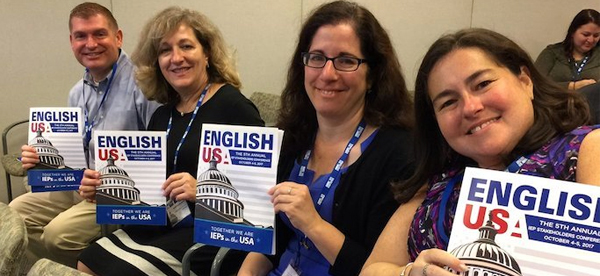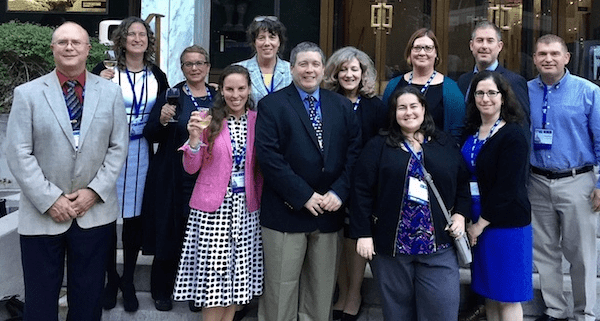Opportunities for IEPs to increase enrollments and diversify student population
There was no shortage of the terms “challenging times” and “tough U.S. political climate” at this year’s annual EnglishUSA Stakeholders conference in Washington, D.C. However, despite the somber mood, there were also tones of “resilience” and “adaptability” resonating in the air. As IEPs across the nation are facing a shrinking pool of international students to go around, and a pool made of students that have increasingly better access to English language instruction in their home countries, language centers and IEPs are being forced to adapt, diversify and leave no stone unturned when it comes to international student recruitment.
The following are some highlights from the conference that IEPs in the U.S. can explore as possible new or continuing channels for recruitment.
Expanding the scope of IEP services
In response to the fact that college-aged international students are coming to the U.S. with higher levels of English language proficiency, many IEPs have turned to offering junior camps at their centers. Although these high-maintenance programs may seem to cause more headaches than are worth it, the ancillary revenue generated from such programs can make a difference and help to counter revenue declines from more traditional academic English programs. EnglishUSA member IEPs presented on best practices in delivering these kinds of programs.
Along the same idea of expanding the scope of services IEPs offer beyond traditional academic English programs, IEPS are diversifying their programming to include professional development opportunities in executive education. Lifelong learning is here to stay in this world of ever-faster pace of change, and professionals across all industries are looking to skill-up and stay ahead of the curve. Teacher training is also an area of need worldwide, as more and more countries make it a nationwide priority to have their workforce become bilingual.Programs such asPanamá Bilingüe, English Opens Doors and Colombia Very Well are great examples of this.

Identifying sending markets for IEPS
In terms of sending markets for IEPS to focus on, in addition to the obvious market, China, others are emerging. The U.S. Commercial Service (USCS) cited several: Japan, due to the government’s initiative to double bilateral exchanges by the year 2020; South Korea, because 30% of South Korean students in the United States study ESL; and Vietnam, due to the country’s inability to meet the higher education needs of its growing population. In Latin America, the USCS cited Colombia, whose overall budget for education is larger than the national defense budget, and Mexico, where demand for short-term ESL programs is particularly high, as evidenced by its scholarship program, Proyecta 100,000. Saudi Arabia remains a top-sending market that is increasingly looking for English for Specific Purposes (health fields).
Staying aware of worldviews on pathways programs and political climate
Representatives from the Middle East provided updates to their government-sponsored scholarship programs, and chimed in on two important topics: pathways programs and whether or not the U.S. political climate was having an effect on students’ desire to study in the United States. While some embassy representatives stated that getting approval for pathway programs was somewhat complicated (e.g. Kuwait), other expressed extreme support for programs that combined academic and ESL classes (e.g. Oman). All four embassies represented – United Arab Emirates, Saudi Arabia, Kuwait and Oman – stated that the U.S. political climate was not having much effect on students’ desires to study in the United States, and that the U.S. still remained a top destination for sponsored students from these countries.
Of the Latin American countries represented at the conference – Panamá, Colombia, Mexico and Brazil – only Mexico affirmed that the U.S. political climate was having a negative impact on student mobility from Mexico to the U.S.
In summary, there are clearly many opportunities that IEPs can explore to increase enrollments and diversify their student population. Having to face challenging times has forced a change in mindset to focus on being nimble, adapting, and leaving no stone unturned.
Click here to contact Lisa Rooney about taking advantage of opportunities to expand your IEP’s services and reach. Learn more about the many other ways Bridge GlobalEd can help you reach new international student markets.











